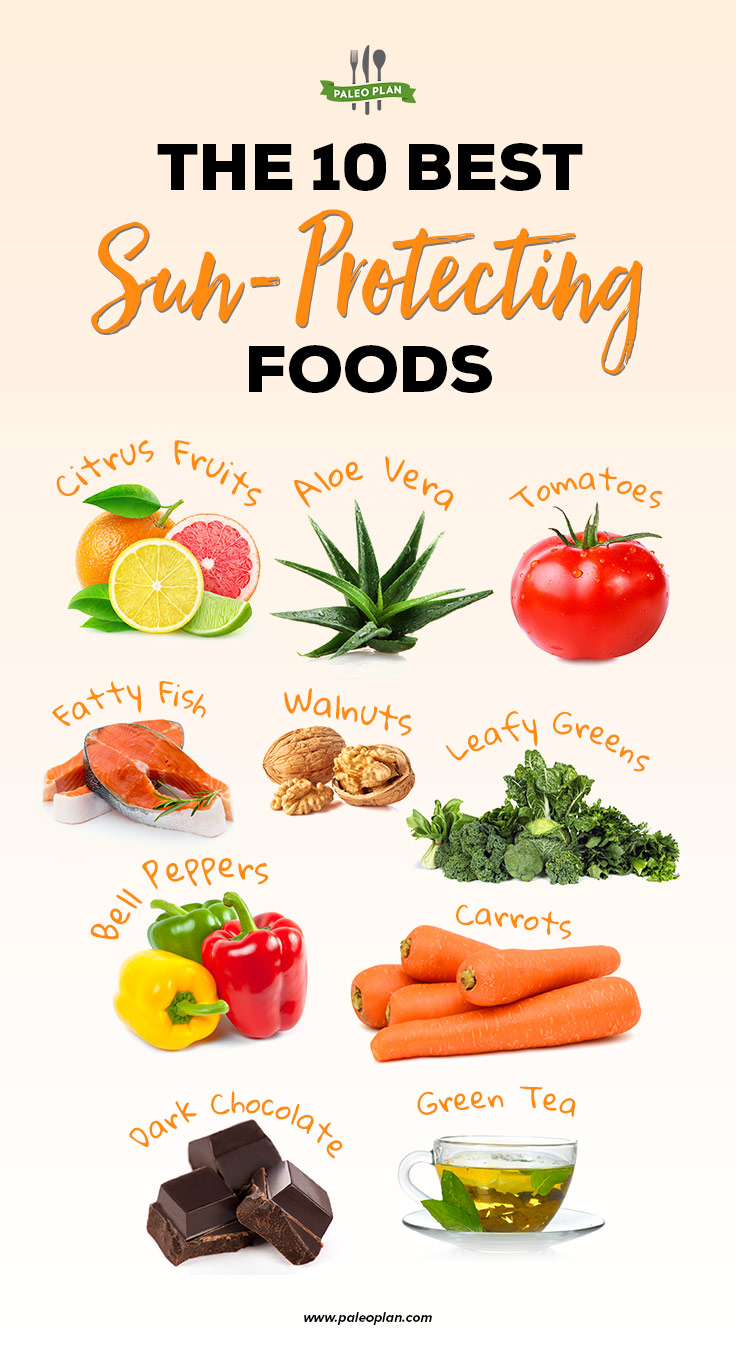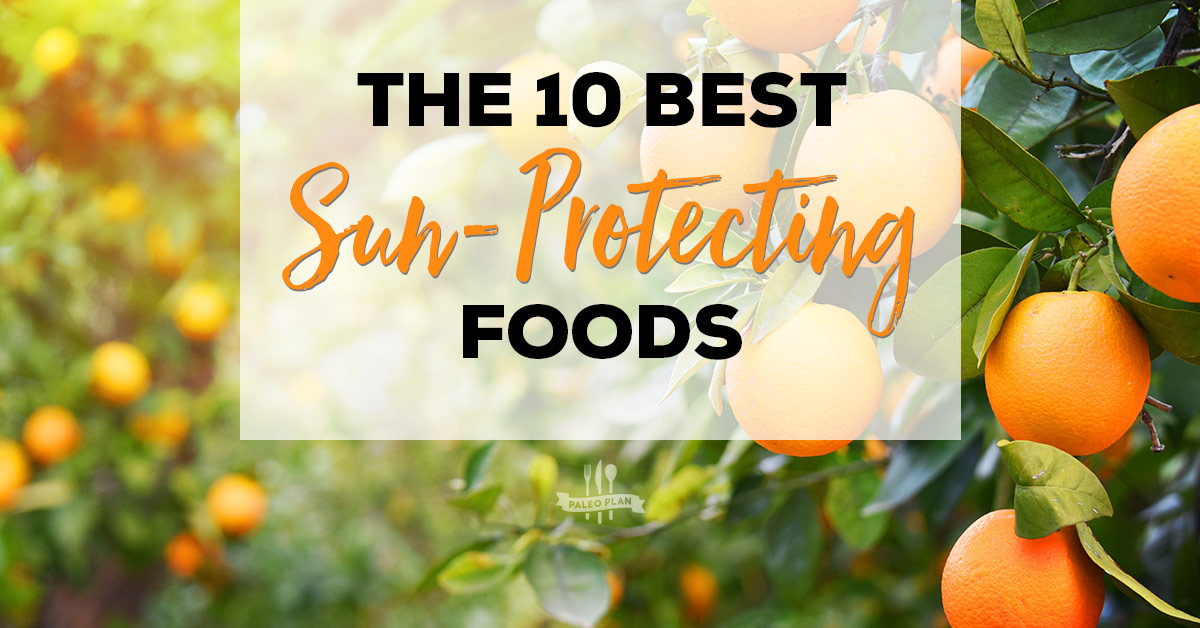
Sure, getting in your daily dose of vitamin D is beneficial, but what do you do when you’re spending full days in the sunshine? Many turn to various sunscreens, re-applying several times a day.
Unfortunately, many commercial sunscreens are loaded with toxic chemicals that come with serious consequences. Instead, it’s best to switch to a natural topical sunscreen while also protecting your skin from the inside out with sun-protecting foods.
Research shows that certain foods you eat can help protect and repair your skin from sun damage. These foods reduce your risk of developing premature wrinkles and skin cancer.
Before we get into what these foods are, let’s first dive into how you’ll benefit from “edible” sunscreen.
The Benefits of Eating Your Sunscreen
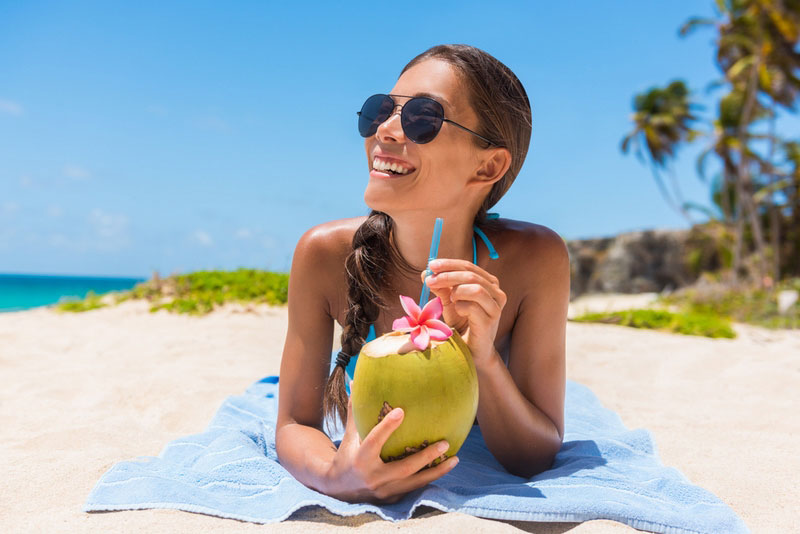
Getting a dose of natural sun protection through the foods you eat has several important and unique benefits.
Avoid Dangerous Chemicals
The main reason to switch to eating foods as a form of natural sunscreen (combined with a topical natural sunscreen) is that most commercial sunscreens are loaded with toxic chemicals and preservatives.
And the kicker? Many of these chemicals are associated with the development of skin cancer – the thing you were trying to avoid in the first place by slathering up. (1)
Internal Protection
Using sunscreen as your only line of defense against UV rays only protects your skin from the outside. Have you ever kept reapplying sunscreen when you’re at the beach, and still get burned since it slides off so easily?
This doesn’t happen when your protection comes from the inside by consuming antioxidant-rich foods. Instead, these nutrients minimize damage holistically: You can’t wash off the antioxidants protecting your skin’s cells from DNA damage.
Protect from Aging
One of the major side effects of sun exposure is photoaging, or aging due to UV radiation exposure. (2) When you get burnt or tan excessively without protection, your skin undergoes stress and damage. This results in the classic aging symptoms: wrinkles, sagging skin, and loss of suppleness.
When you consume antioxidants in certain foods, they absorb the free radicals from UV rays causing DNA damage, removing them before they can cause harm. This keeps your skin looking younger over time.
The 10 Best Sun-Protecting Foods
One thing to keep in mind when you’re eating foods for sun protection is that many of the antioxidants in these foods require about a two-week time frame to “kick in.” For instance, in many of the studies above, sun-protective effects weren’t seen until the 10-day mark. So, if you have a vacation coming up or expect to be in the sun a lot this summer, make sure to start eating these foods as soon as possible.
1. Citrus Fruits
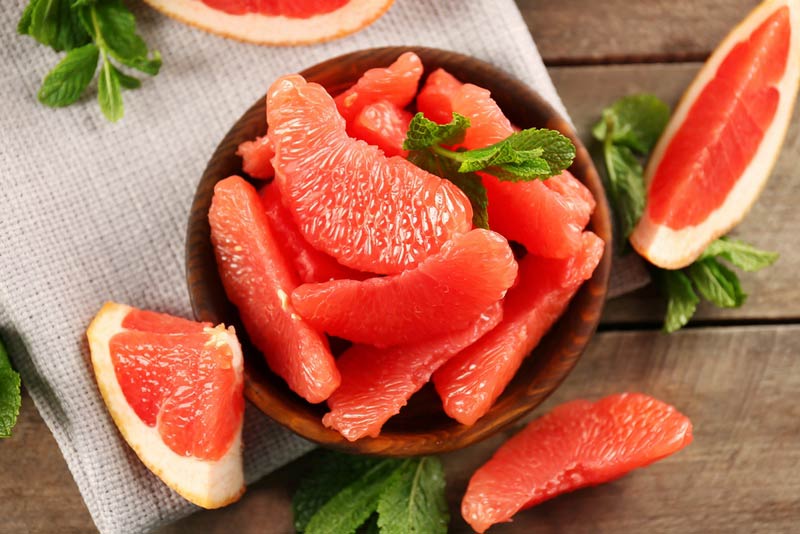
Citrus fruits are not only refreshing on a sunny day, but are also excellent at helping your skin repair from sun damage.
Fruits like grapefruit, mandarins, oranges, and lemons contain high doses of vitamin C, which helps neutralize free radicals generated by excess sun exposure. (3) It’s also one of the most plentiful antioxidants in your skin, which highlights its importance in maintaining skin health.
Be sure to get in your oranges and grapefruits at least a few times a week to get an adequate dose of vitamin C.
2. Aloe Vera
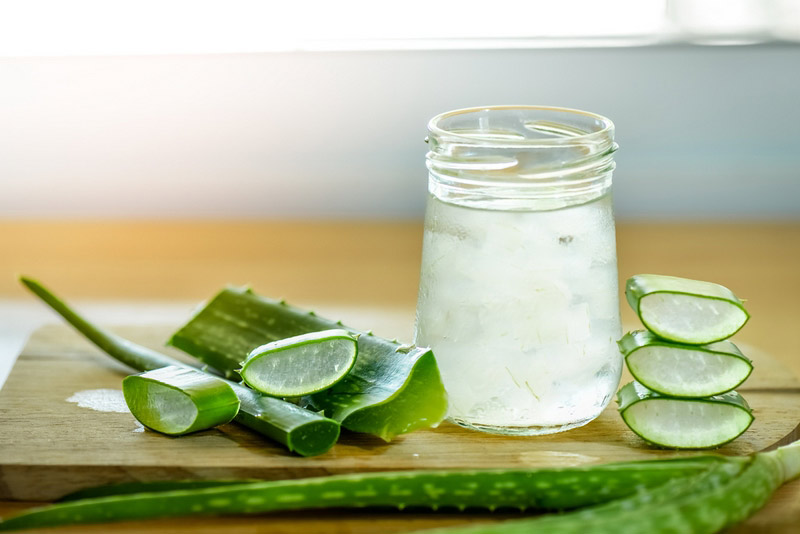
While aloe vera gel soothes sunburns when applied topically, research shows that it can also be used internally to increase collagen synthesis in your skin. (4) Boosting collagen synthesis is crucial in fighting signs of aging, as collagen breaks down as we age and when we’re exposed to too much solar radiation.
To maximize the skin-healing effects of aloe, add a couple tablespoons to your smoothies or other dishes daily.
3. Tomatoes
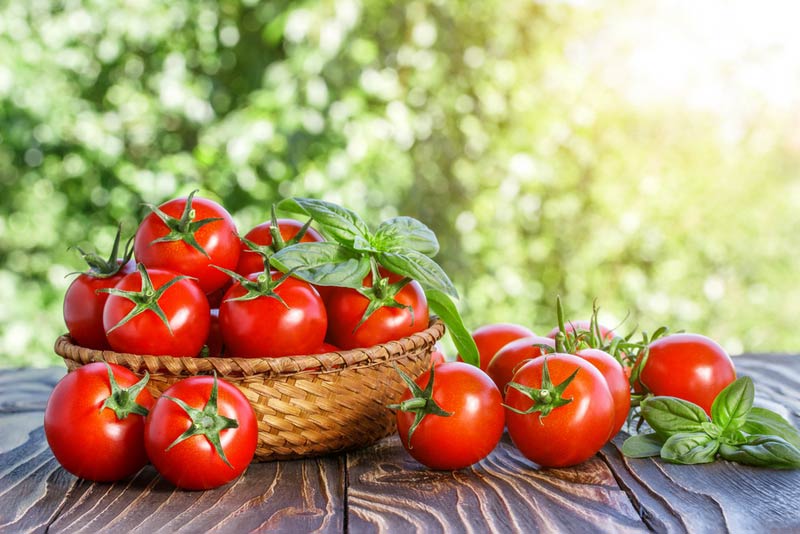
Tomatoes are another all-star when it comes to protecting your skin from the sun. It’s major antioxidant lycopene, which gives red fruits and vegetables their vibrant color, offers significant protection from UV radiation.
One study found that participants consuming tomato paste (a concentrated blend of tomatoes rich in antioxidants and lycopene) daily for just 10 weeks showed significantly less burning after being exposed to UV radiation when compared to before they began to consume tomato paste. (5)
Takeaway: Splurge daily on fresh and stewed tomatoes in salads or soups, while also adding tomato paste to stews.
4. Fatty Fish
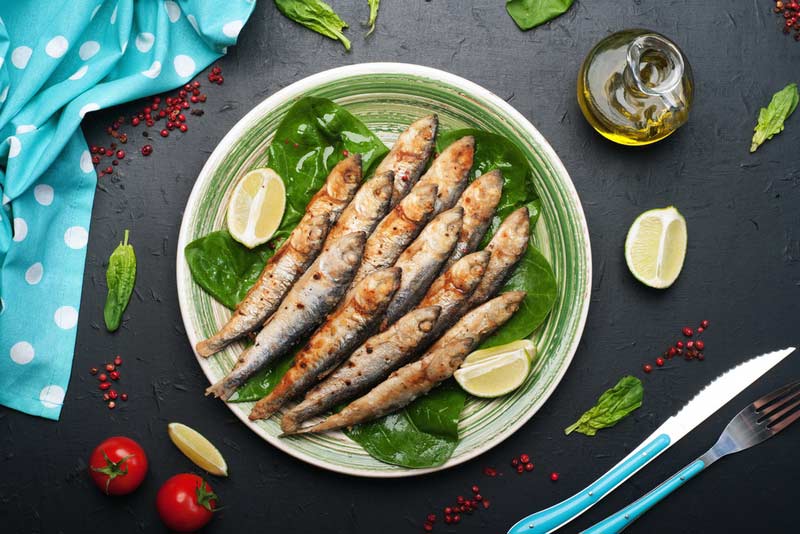
When you get a burn from too much sun exposure, you probably notice your skin feels tight and sensitive to the touch. This is due to the top layers of skin becoming inflamed, which triggers an immune response in your body to heal.
Consuming wild fatty fish, such as salmon and sardines, helps speed along this process due to the high amount of anti-inflammatory omega-3 fatty acids they contain. Omega-3s also help boost your skin’s immunity to UV radiation, reducing your chances of developing skin cancer. (6)
Be sure to have a serving of wild-caught fatty fish two to three times a week or more for optimal protection.
5. Walnuts
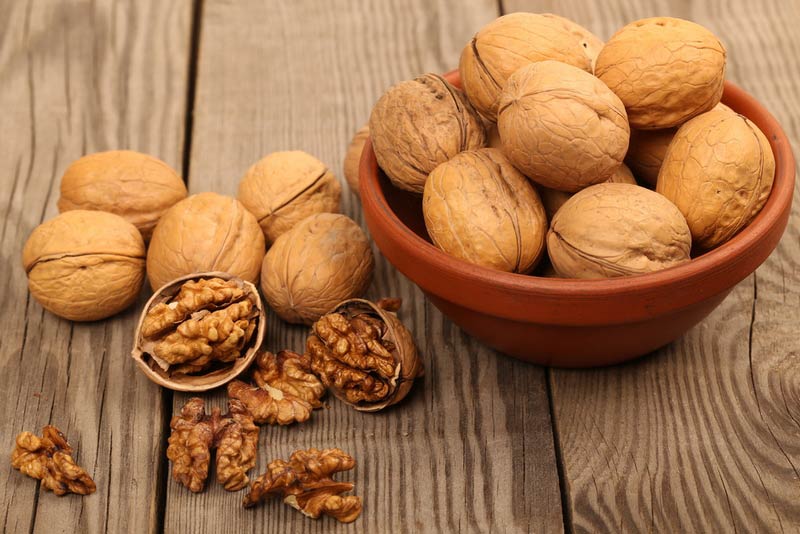
Walnuts are another quick way to get a dose of anti-inflammatory omega-3s.
Studies have shown that in addition to helping reduce inflammation, omega-3s can inhibit the immune reaction following sun damage that can lead to the development of skin cancer. (7)
Try adding a handful of walnuts to your daily diet by adding them to a salad or trail mix as a portable snack.
6. Leafy Greens
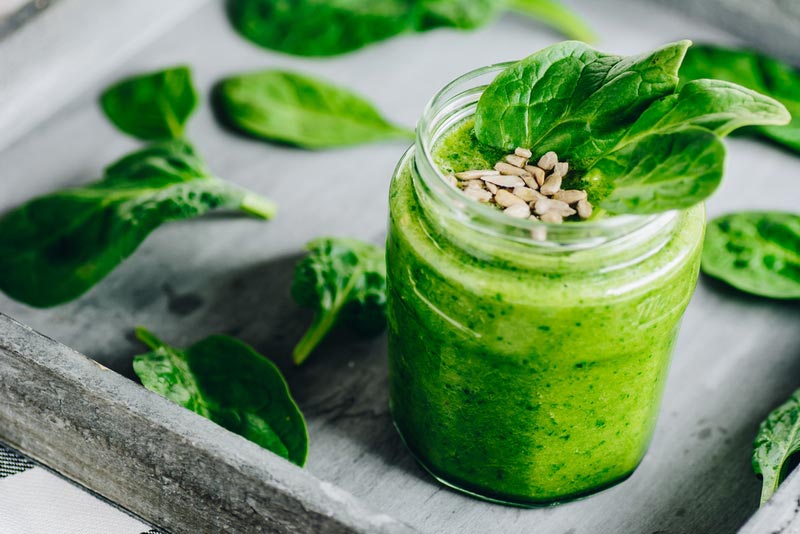
Studies show that greens rich in two antioxidants, lutein and zeaxanthin, can filter sunlight radiation to minimize its damaging effects. In addition, they can also give significant protection against damage to your eyes from direct sunlight. (8)
Try to get a dose of leafy greens (like kale and spinach) at every meal: add them to a smoothie, scramble them with eggs, eat them in salads, or sauté them daily.
7. Bell Peppers

Bell peppers are a rich source of a class of antioxidants called carotenoids. These antioxidants are responsible for the deep color of various peppers. Carotenoids also help absorb UV radiation before it reaches your cells and causes damage. (9)
Stir-fry bell peppers with ground beef or chicken a few times a week for an extra dose of skin-protecting carotenoids.
8. Carrots
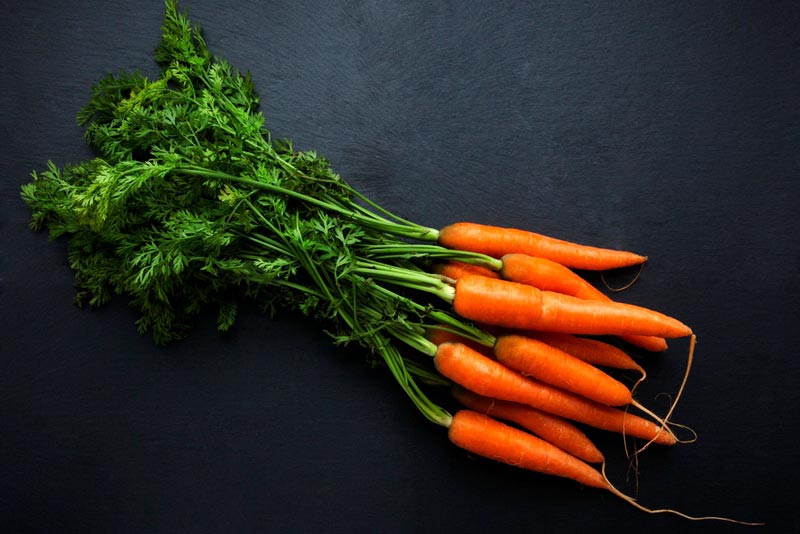
Carrots are another great source of carotenoid antioxidants. Carrots contain ample amounts of beta-carotene, which can significantly reduce the effects of sunburns and skin damage in as little as eight weeks. (10)
If you’re going to go the carrot route when it comes to sun protection, make sure you cook them (and ideally purée them) before eating. This has been shown to significantly increase beta-carotene absorption. (11)
9. Dark Chocolate
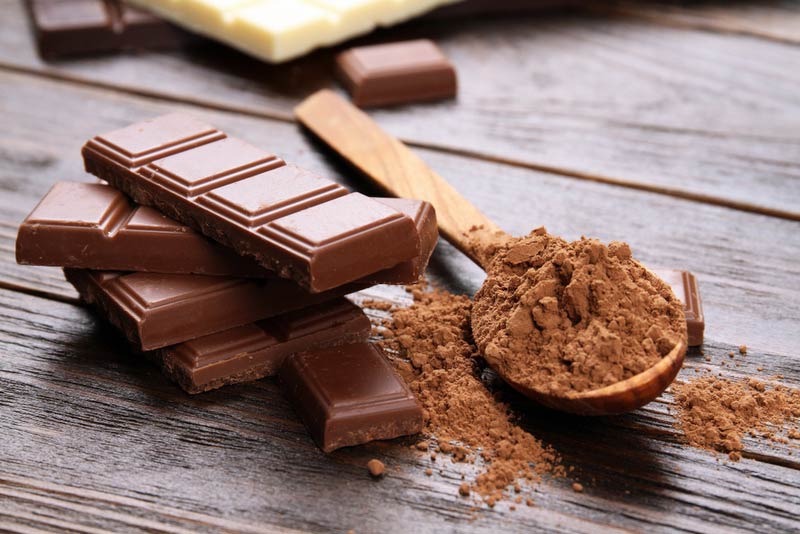
If you needed an additional excuse to eat chocolate, here it is: dark chocolate contains potent flavonoid antioxidants that reduce sun damage and improve skin texture. Studies show that people who consumed cocoa drinks for 12 weeks were significantly less sensitive to UV radiation than those who didn’t. (12)
One thing to note: if you’re going to indulge in chocolate, make sure it’s dark with at least a 75 percent cacao content and no additional flavors or preservatives added.
10. Green Tea
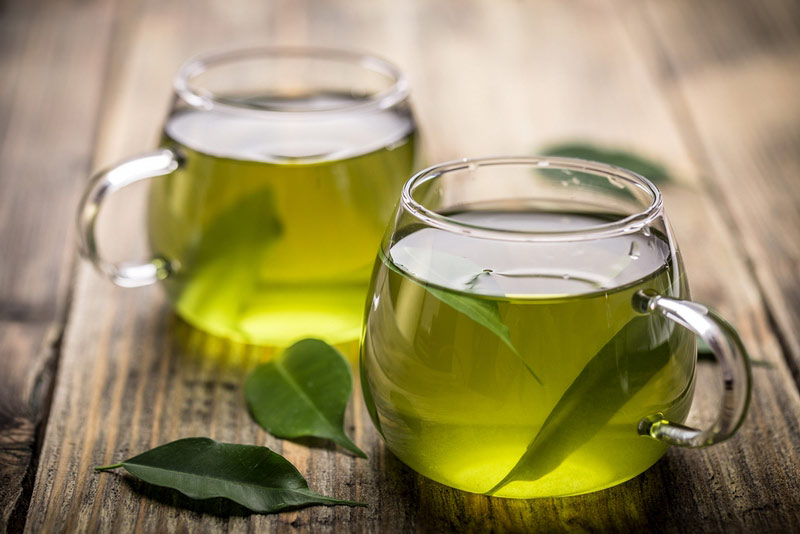
Green tea contains a unique powerhouse antioxidant called epigallocatechin-3-gallate (EGCG), which has been studied extensively for its ability to reduce free radical damage. EGCG can protect your DNA from damaging environmental stressors, including UV radiation. This also makes it a powerful fighter against the development of skin cancer. (13)
